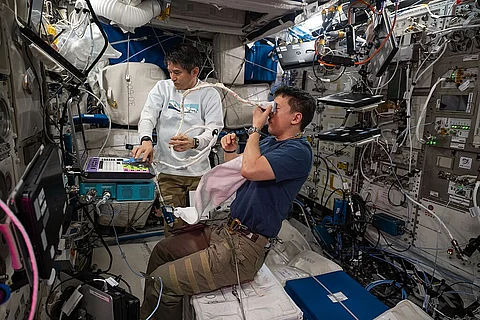NASA researchers observed these symptoms in astronauts aboard the International Space Station (ISS), particularly those who stayed for more than six months. In some cases, the changes did not fully reverse even after returning to Earth. This raises concerns about the health risks of upcoming missions, especially the planned human mission to Mars, which would require astronauts to spend at least three years in microgravity.
Dr. Michael Roberts, NASA’s vision research lead, emphasized the urgency of developing countermeasures. “We need to understand whether these changes stabilise or continue worsening over time. An astronaut with severely compromised vision could jeopardise an entire Mars mission.” he said.
NASA’s 2015–2020 Fluid Shifts study confirmed that altered blood drainage from the brain in weightlessness contributes to SANS. The Vision Impairment and Intracranial Pressure (VIIP) project linked these fluid shifts to increased brain pressure, using MRI scans, retinal imaging, and eye exams. Canadian researchers using Optical Coherence Tomography found mechanical similarities to glaucoma in affected eye tissues, while Japan’s space agency reported gene expression changes in the optic nerves of space-flown mice.
To combat this, NASA is testing several interventions. These include special contact lenses that redistribute fluid, medications to control intracranial pressure, and exercise regimens that promote healthy fluid circulation. Devices that simulate gravity or apply negative pressure to the lower body are also being evaluated.
Roberts and his team are actively exploring pharmacological options, nutritional supplements such as B vitamins, and environmental modifications like reducing cabin carbon dioxide levels. One astronaut showed improvement after such measures. NASA is also testing VIIP chambers to mimic Earth-like eye pressure and lower-body negative pressure suits to recreate gravity’s downward pull on fluids.


